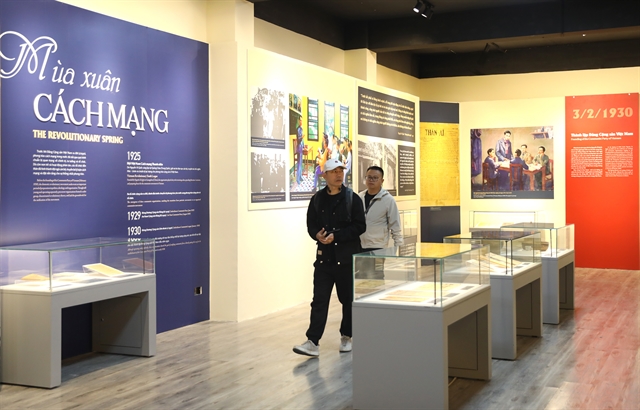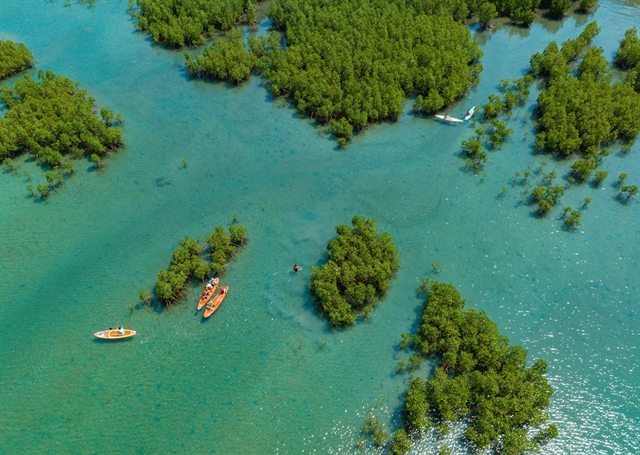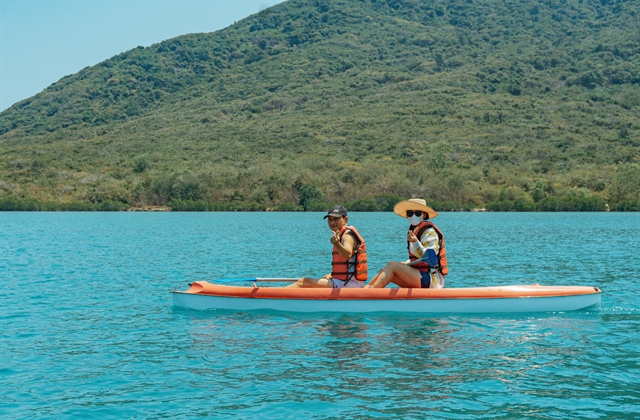 Environment
Environment

 |
| Đầm Bấy mangrove forest in Nha Trang Bay, in the coastal south-central province of Khánh Hòa. — VNA/VNS Photo Phan Sáu |
NHA TRANG — Sustainable coastal tourism development combined with the protection of the marine environment of Nha Trang Bay in the coastal south-central province of Khánh Hòa is a vital concern.
Coastal and island tourism in Nha Trang City has in recent years achieved many successes, especially the development of high-end resorts and the organisation of cultural, tourism, and entertainment events both on and off the coast.
However, the development of tourism infrastructure along the coast and on the islands has caused increasing sedimentation, leading to marine environmental degradation.
Associate Professor, Võ Sĩ Tuấn, former director of the Institute of Oceanography, said it was essential to clearly define that conservation and development must aim towards sustainability.
Exploitation of resources should ensure the sustainable livelihoods of the community and the long-term benefits of businesses.
“It is important to realise that natural resources are finite, so alongside exploitation, preserving resources for long-term use is imperative,” he said.
To minimise negative impacts on Nha Trang Bay and to significantly develop high-end tourism in the city, he suggested proposing to UNESCO to recognise the Hòn Bà - Cái River - Nha Trang Bay complex as the world’s biosphere reserve.
Trần Giỏi, chairman of the provincial Association for Conservation of Nature and Environment, said that before 1975, the mangrove forest area in the city was approximately 260ha.
However, by the 1990s, mangroves were severely affected due to the proliferation of shrimp farming, nearly being wiped out.
In recent years, there has been natural regeneration and re-planting of approximately 18 hectares of mangroves.
“However, this is insufficient,” he added.
He said that the marine ecosystem in the Nha Trang Bay Marine Protected Area, including coral reefs, had been damaged by environmental impacts and dangerous fishing activities.
Although there were efforts for re-planting and protection, monitoring the coral reef restoration process was necessary, he said.
Additionally, the risk of seagrass and mangrove degradation was alarming. Protecting and restoring mangrove ecosystems required special attention to enhance their protective role and landscape restoration.
Marine ecosystems have contributed to biodiversity, economic value and the sustainable development of the city’s tourism, he said.
Nguyễn Tấn Tuân, deputy secretary of the provincial Party Committee and chairman of the provincial People's Committee, said that the city needed to prepare and implement appropriate mechanisms and policies to exploit, utilise and boost its potential development.
The city should focus on marine and island issues in many aspects to find effective solutions for preserving, promoting and developing the values and potential of the sea and islands.
Nguyễn Chu Hồi, permanent deputy chairman of the Việt Nam Fisheries Society (VINAFIS), said that exploring Nha Trang City could not exclude the diversity and uniqueness of the sea and islands.
Particularly, in strategic planning and development plans, the close connection between urban areas of the city and the sea and islands should be emphasised.
Therefore, it was necessary to continue innovative thinking and development vision, harnessing the marine and island values that the nature provides to build a sustainable marine and island city, he said.
 |
| Tourists in Đầm Bấy mangrove forest in Nha Trang Bay, in the coastal south-central province of Khánh Hòa. — VNA/VNS Photo Phan Sáu |
City by the bay
Nha Trang Bay is considered the highlight of the coastal area of Nha Trang City, where many special marine and island values converge.
In the mid-1990s, the Hòn Mun marine area in the bay was selected as the location for the international "Underwater Photography" Contest.
The Hòn Mun Marine Protected Area, the first of its kind in Việt Nam, was established in 2001, renamed the Nha Trang Bay Marine Protected Area in 2004, covering an area of over 160sq.km.
In 2003, Nha Trang Bay was recognised as a member of the Club of the Most Beautiful Bays in the World.
In 2005, it was ranked as a national-level scenic spot by the Ministry of Culture, Sports and Tourism.
Hồ Văn Mừng, secretary of the city’s Party Committee, said that in the 2009-24 period, the city's socio-economic development had made significant progress. Per capita income increased from US$2,508 in 2009 to nearly $5,000 so far.
Tourism has been the leading economic sector with total tourism and service revenue increasing by over 54 times compared to 2009.
In 2016, the city welcomed 4.2 million tourists for sightseeing and recreation. By the end of 2019, the figure reached 6.5 million.
After the COVID-19 pandemic, the tourism sector in the province and especially in the city has been rapidly recovering.
In 2023, the province welcomed over seven million tourists for accommodation and recreation, and Nha Trang City alone accounted for about 70 per cent of the tourist arrivals.
The rapid development of the city's tourism was thanks to the values that Nha Trang Bay brings, he said.
Nha Trang Bay is one of the most beautiful bays in the world, with 19 large and small islands creating a majestic and poetic landscape. — VNS




